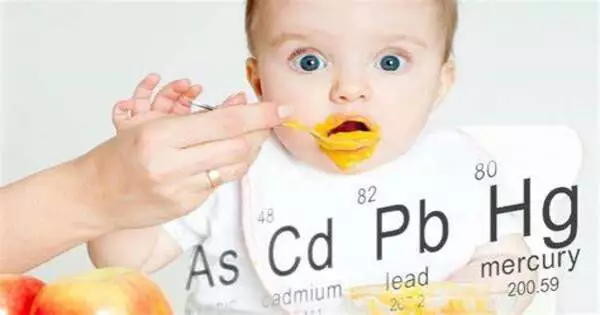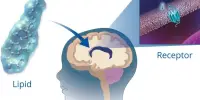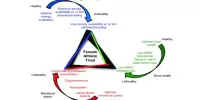The issue of foodborne metal contamination has gained new urgency, thanks in part to a 2021 US Congressional Report revealing high levels of metals found in infant food pulled from grocery shelves.?(Recently, high levels of lead in children’s fruit puree pouches were discovered.) Two new studies now provide information on the relationship between heavy metal exposure in food and the risk of cancer and other serious health risks. The findings will be presented at the 2023 Annual Conference of the Society for Risk Analysis.
Heavy metals from contaminated soil, air, and water can be absorbed by food crops. As a result, traces of dangerous heavy metals such as lead, arsenic, and cadmium can be found in everyday foods such as rice and cereals, as well as nuts and spinach. Felicia Wu, a food scientist at Michigan State University and the SRA’s incoming president, is leading several studies to better understand the health risks of heavy metal exposure.
She will present the findings of two recent studies at the SRA meeting in December. The first is a comprehensive assessment of the health risks associated with dietary lead, arsenic, and cadmium exposure. The second is a quantitative analysis of the cancer risk posed by inorganic arsenic exposure. “Results from these studies have important implications for food safety regulations, public health policies, and consumer awareness” says Wu.
Heavy metals from contaminated soil, air, and water can be absorbed by food crops. As a result, traces of dangerous heavy metals such as lead, arsenic, and cadmium can be found in everyday foods such as rice and cereals, as well as nuts and spinach.
Health risks of dietary exposure to lead, arsenic, and cadmium
In the first study, Wu, along with postdoctoral research fellow Charitha Gamlath and Ph.D. student Patricia Hsu, gathered data on each metal’s dietary intake from a variety of sources, including food and water samples, as well as existing studies and reports. The data was analyzed by the researchers to determine the strength of the link between dietary exposure and adverse health effects. The strength of the links between heavy metal exposure and each effect was determined using Bradford Hill Criteria scores for both cancer and non-cancer health effects.
Lead is a toxic metal commonly found in old paint, water pipes, and contaminated soil. Food sources of lead include root vegetables like beets. In the study, lead showed moderate to high-risk scores for causing lung, kidney, bladder, stomach, and brain cancers. It also showed moderate to high scores for non-cancer risks (hematopoietic, reproductive, neurological, renal, and respiratory effects).
Arsenic is a naturally occurring toxic element that can contaminate drinking water and food — especially in areas with high levels of arsenic in the soil. It can be found in rice, wheat, and leafy green vegetables, among other foods. Arsenic demonstrated moderate to high scores for skin, bladder, lung, kidney, and liver cancers. It also showed moderate to high scores for non-cancer risks (skin lesions, cardiovascular disease, immunological, neurological, reproductive, developmental, and renal effects).

Cadmium is a toxic metal found in nuts, potatoes, seeds, cereal grains, leafy green vegetables, and tobacco smoke. Among its sources in the environment are fertilizers and industrial emissions. In the study, cadmium revealed moderate to high risk scores for prostate, renal, bladder, breast, pancreatic, and endometrial cancers. It also showed moderate to high scores for non-cancer risks (renal, developmental, reproductive, immunological, and neurological effects).
Wu co-authored a study on cadmium in baby food earlier this year, which was published in Food and Chemical Toxicology. The researchers discovered that babies and young children aged 6 months to 5 years old are the most vulnerable to cadmium in common foods. American infants and young children of these ages who regularly consumed rice, spinach, oats, barley, potatoes, and wheat had mean cadmium exposures that exceeded the Agency for Toxic Substances and Disease Registry’s (ATSDR) maximum tolerable intake level.
Arsenic exposure and bladder, lung, and skin cancer cases in the U.S.
Wu and Ph.D. student Rubait Rahman conducted a quantitative cancer risk assessment for various food products containing inorganic arsenic in the United States in the second study to be presented.
According to preliminary estimates, inorganic arsenic consumption in the United States causes more than 6,000 additional cases of bladder and lung cancers, as well as over 7,000 cases of skin cancers each year. The researchers also discovered that certain food products are associated with a higher risk of cancer than others. Rice, wheat, and leafy green vegetables are examples.
A comprehensive review of scientific literature was conducted for this project in order to identify relevant studies on inorganic arsenic contamination in various food products and associated cancer risks. Regulatory agencies such as the United States Food and Drug Administration (FDA) and the United States Department of Agriculture (USDA) provided data on arsenic levels in food products. To estimate the cancer risk associated with inorganic arsenic exposure through various food products, quantitative cancer risk assessment models were used. To calculate the likelihood of cancer occurrence, these models combined exposure data, dose-response relationships, and population characteristics.
















